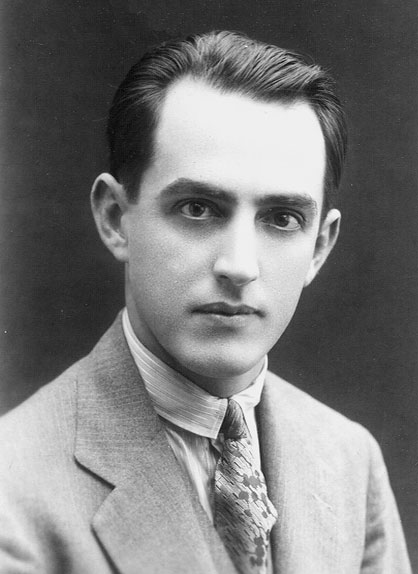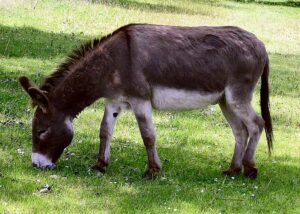Except they weren’t: An occasional series about people who are Not What They Seem
Malba Tahan was a famous writer from Baghdad who traveled throughout the Middle East, recording tales of his adventures.

His most famous stories describe his travels with his friend Beremiz Samir, an Arabian traveler who was a mathematical genius. The pair traveled throughout the Muslim world like Watson and Holmes: Samir came up with ingenious solutions to practical mathematics problems, and Tahan recorded their adventures in beautiful, lyrical prose.
In 1949, soon after his death, Tahan’s work was published in Portuguese translation as O Homem Que Calculava (The Man Who Counted). It became an improbable bestseller in Brazil, where it remains one of its best-loved books. And so an unlikely hero to modern-day Brazilians is Malba Tahan, the Islamic Renaissance Man.
Except he wasn’t.
“Malba Tahan” was the fictional creation of Julio Cesar de Mello e Souza, a math teacher from Rio de Janeiro, who wrote the book to help teach his students how to solve word problems.
The result is beautiful, both in how Tahan/de Mello tells the tales and in how Samir/de Mello solves the problems. To appreciate the beauty, take a look at this, a translated version of one of the first stories in the book. It’s a bit long, but it’s definitely worth reading through:
We had been traveling for a few hours without stopping when there occurred an episode worth retelling, wherein my companion Beremiz put to use his talents as an esteemed cultivator of algebra.
Close to an old half abandoned inn, we saw three men arguing heatedly beside herd of camel. Amid the shouts and insults the men gestured wildly in fierce debate and we could hear their angry cries:
“It cannot be!”
“That is robbery!”
“But I do not agree!”The intelligent Beremiz asked them why they were quarreling.
“We are brothers,” the oldest explained, “And we received thirty-five camels as our inheritance. According to the express wishes of my father half of them belong to me, one-third to my brother Hamed, and one-ninth to Harim, the youngest. Nevertheless we do not know how to make the division, and whatever one of us suggests the other two disputes.
Of the solutions tried so far, none have been acceptable. If half of 35 is 17.5, if neither one-third nor one-ninth of this amount is a precise-number, then how can we make the division?”
“Very simple,” said the Man Who Counted. “I promise to make the division fairly, but let me add to the inheritance of 35 camels this splendid beast that brought us here at such an opportune moment.”
At this point I intervened.
“But I cannot permit such madness. How are we going to continue on our journey if we are left without a camel?”
“Do not worry, my Baghdad friend,” Beremiz, said in a whisper. “I know exactly what I am doing. Give me your camel, and you will see what results.”
And such was the tone of confidence in his voice that, without the slightest hesitation, I gave over my beautiful Jamal, which was then added to the number that had to be divided between the three brothers.
“My friends,” he said, “I am going to make a fair and accurate division of the camels as you can see, now number 36.”
Turning to the eldest of the brothers, he spoke thus: “You would have half of 35 – that is 17.5. Now you will receive half of 36 – that is 18. You have nothing to complain about because you gain by this division.”
Turning to the second heir, he continued, “And you, Hamed, you would have received one-third of 35 – that is, 11 and some. Now you will receive one-third of 36 that is 12. You cannot protest as you too gain by this division.
Finally he spoke to the youngest, “And you young Harim Namir, according to your father’s last wishes you were to receive one-ninth of 35 or three camels and part of another. Nevertheless, I will give you one-ninth of 36, or 4. You have benefited substantially and should be grateful to me for it.”
And he concluded with the greatest confidence, “By this advantageous division, which has benefited everyone, 18 camels belong to the oldest, 12 to the next, and 4 to the youngest, which comes out to… 8 + 12 + 4 = 34 camels. Of the 36 camels, therefore, there are 2 extra. One, as you know, belongs to my friend from Baghdad. The other rightly belongs to me for having resolved the complicated problem of the inheritance to everyone’s satisfaction.”
“Stranger, you are a most intelligent man,” exclaimed the oldest of the three brothers, “and we accept your solution with the confidence that it was achieved with justice and equity.”
The clever Beremiz, the Man Who Counted, took possession of one of the finest
animals in the herd and, handing me the reins of my own animal, said, “Now, dear friend, you can continue the journey on your camel, comfortable and content. I have one of my own to carry me.”And we traveled on towards Baghdad.
It’s a beautiful story, but how TF does the math work out? How does that make any sense?
The Math
Samir’s solution was clever, but it required some risk – he added into the herd the camel that Tahan was riding, making a new herd of 36. He then divided the new herd according to the father’s instructions: one-half (18) to the eldest, one-third (12) to the middle, and one-ninth (4) to the youngest. All three brothers were satisfied with this arrangement, which left two camels remaining. One, of course, was Tahan’s that had been added at the beginning. Samir requested the other as his payment for arranging this solution – and since all three brothers were satisfied, they agreed. Samir grabbed the strongest, most beautiful member of the herd, and the pair rode off together into the sunset.
It’s a happy ending. Everyone is satisfied, especially our heroes. And you have to admire Samir’s Raven-level trickeration in getting something for nothing. But how did he solve the problem?
When faced with a word problem, often the best first step is to write down what you know and what you want to find out. Before Tahan and Samir arrive, here is the situation the brothers face:
What we know
- Total camels: 35
- Fraction to each brother:
- Eldest: 1/2
- Middle: 1/3
- Youngest: 1/9
What we want to find out
- How many camels should each brother get?
In theory, this should be an easy problem: for the eldest brother, divide 35 by 2, and repeat for the others. Thus, the eldest brother should get 17 1/2 camels – not too pleasant for the camel! And besides, half a camel is not that useful anyway. Clearly a better solution is needed.
Tahan and Samir arrive, Samir offers Tahan’s camel for the herd, and the problem changes. Now we have:
What we know
- Total camels: 36
- Fraction to each brother:
- Eldest: 1/2
- Middle: 1/3
- Youngest: 1/9
What we want to find out
- How many camels should each brother get?
Now we’re getting somewhere.
36 divided by 2 is 18, 36 divided by 3 is 12, and 36 divided by 9 is 4. Thus, the three brothers get eighteen, twelve, and four camels, all of which give them full camels instead of useless fractional camels.
Adding up all three brothers’ camelshare gives 18 + 12 + 4 = 34 camels, with two remaining from the herd. One was Tahan’s, one is now Samir’s. Everything is A-OK.
But where did that extra camel come from?
Re-read the father’s instructions again, carefully:
According to the express wishes of my father half of them belong to me, one-third to my brother Hamed, and one-ninth to Harim, the youngest.
At this stage, there are two ways to approach the problem. The slightly easier way is to convert the fractional shares. You can always multiply the top (numerator) of a fraction by any number, and the bottom (denominator) by the same number, and the fraction will be the same. One-half (1/2) is the same as two-fourths (2/4). So, let’s multiply each fractional camelshare by the number of camels, which is now 36. Thus, the father’s instructions now read:
According to the express wishes of my father 18/36 of them belong to me, 12/36 to my brother Hamed, and 4/36 to Harim, the youngest.
Or, if you prefer, you can convert the fractions to percentages (rounded to the nearest tenth of a percent):
According to the express wishes of my father 50% of them belong to me, 33.3% to my brother Hamed, and 11.1% to Harim, the youngest.
Either way, it quickly becomes clear: the father’s will was incomplete! The percentages don’t add up to 100%, so no matter how many camels were in the herd, some would be left over after the division.
Cool, huh?
Image credits
Adorable camels from wikipedia user Bernard Gagnon
Photo of Julio Cesar de Melo e Sousa from Instituto Malba Tahan



